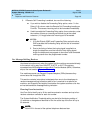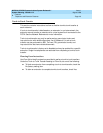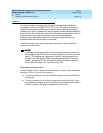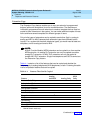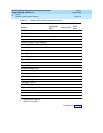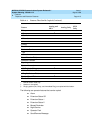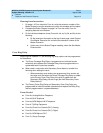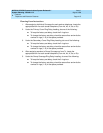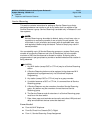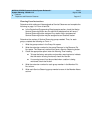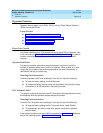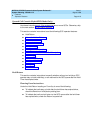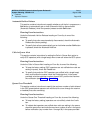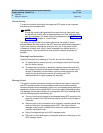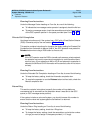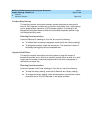
MERLIN LEGENDCommunications System Release 6.1
System Planning
555-661-112
Issue 1
August 1998
Features
Page 4-16Telephone and Extension Features
4
Service Observing 4
This section contains instructions for setting up Service Observing so that a
designated observer can monitor a call at any station that is a member of the
Service Observer’s group. Service Observing is available only in Release 6.1 and
later systems.
NOTE:NOTE:NOTE:
Service Observing may be subject to federal, state, or local laws, rules, or
regulations or require the consent of one or both of the call parties. You
must check in your jurisdiction and comply with all applicable laws, rules,
and regulations before using this feature. Failure to comply may result in
severe penalties.
You can establish up to 16 Service Observing groups on a system. Each group
consists of one Service Observer and a list of the stations (up to the system
maximum of 200) that the observer is allowed to monitor. A warning tone is
programmed on a per group basis to provide an audible indication that a station is
being observed.
NOTES:
1. Any MLX station (except QCC or CTI link) may be a Service Observing
station.
2. A Service Observing button must be assigned to the observers MLX
telephone and is programmed only via Centralized Telephone
Programming.
3. Any station (except QCC or CTI link) may be a group member.
4. If a station becomes a QCC or CTI link, it is removed from all Service
Observing groups.
5. A Service Observer may be a member of another Service Observing
group. Any station may be a member of more than one Service
Observing group.
6. The Service Observer and all extensions in a Service Observing group
must be on the local switch.
7. Data, video, page, and reminder service calls, and calls at VMI ports and
delay announcement devices cannot be observed.
Forms Needed 4
■ Form 4d, MLX Telephone
■ Form 5b, Direct-Line Console (DLC): Digital
■ Form 11, Service Observing: Group Assignment



